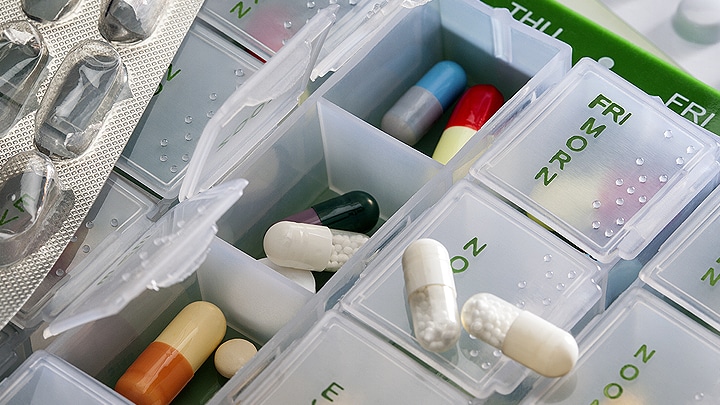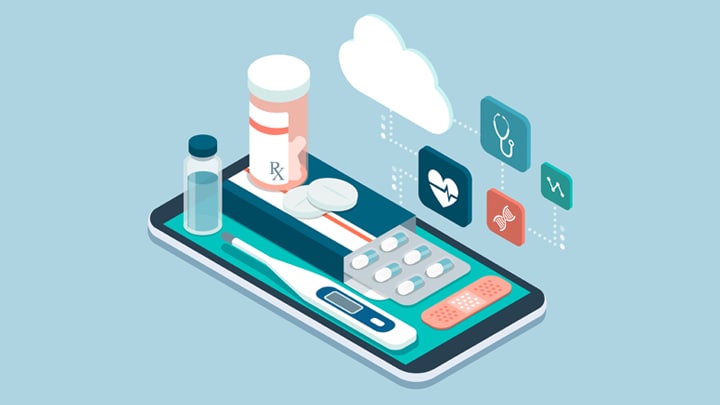When it comes to technology’s vast potential in the world of healthcare, it’s reassuring to see
how much it can offer in terms of practical, life-saving help. Beyond the complex equipment and
devices used in MRIs, X-ray equipment, scanners and ventilators, more “straightforward” tech is
being put to use to support “at-home” treatment. For instance, technology that could assist the 50 percent of patients
the WHO estimates are unable to complete or follow their treatment guidelines. Innovations using NFC and
RFID technologies form a prescription for success.
“Complete this course of medication” – the banner headline of every antibiotic prescription,
reminding us that if we don’t take all our meds, we’re not going to get better. This is patient
adherence, and half the population isn’t at it—estimates as far back as as far back as 2012
show non-adherence costs the U.S. healthcare system up to
USD $300 B annually. Thankfully, a range of smartphone therapy compliance apps have been developed to
prompt the patient when the next dose is due and NFC tags in the tablet blister pack can register
tablet use.

Right Dose, Right Info
It’s not just compliance and adherence that NFC and RFID can help with, but something even more
straightforward and vital: information. The insert with medication is often difficult to read,
condensed and, infuriatingly, inside the package itself. So, how about an NFC tag on the package
that can steer us to a website with clear directions, warnings or instructions? Sounds like just
what the doctor ordered, right?
Wound Treatment
Another area where NFC can be of significant help is in wound healing. If you’ve ever taken off a
bandage “just to check” and then had to reapply the dressing because the wound wasn’t as healed as
you’d hoped, then this use case is for you. It’s an
NTAG® SmartSensor
tag inside the dressing to detect changes in temperature and moisture. Rather than opening the
dressing to check (and thereby risking re-infection), a smartphone tap on the dressing will give
an accurate progress report.

Fluid Solutions
Whether catheter bags for outgoing fluid or saline drips for ingoing, the liquid levels of medical
bags can be checked and fitted with sensors that indicate when they’re full or empty. This can
help medical staff to attend to patient needs in a timely manner. NFC tags can also be used in
conjunction with disposable accessories, such as tubing kits and injection cartridges. Alongside an
NFC-enabled smartphone, this can help eliminate the chance of mistakes or incorrect use of
equipment, which can be tracked easily with
UHF RAIN RFID
technology for inventory management from production to final use.
Tackling Supply Chain Challenges
An NFC-enabled temperature logging tag is useful for tracking shipment and storage data of
temperature-sensitive medicine, such as insulin and vaccines. Using a smartphone, patients and
caregivers can easily access a medication's temperature history, enabling them to identify any
issues that could impact the potency. NFC tags embedded into the packaging of pharmaceutical
products enable tracking throughout each step of the distribution process, making counterfeit
identification more straightforward. In conjunction with the tracking functionality, electronic
seals on the package lids will safeguard against potential theft.
UHF RAIN RFID technology provides real-time information on what is in stock and where it's located for
inventory management. Easier access to expiration information means that stock can be allocated
more efficiently, leading to less waste. It also opens up opportunities for pay-as-you-use
business models. Hospitals don't need to make large up-front investments in pharmaceutical
products but can pay upon consumption instead.
Technologies such as NFC and RFID can provide tangible benefits to healthcare professionals,
caregivers and patients. These technologies can improve patient care and treatment adherence by
reminding patients when to take their medicines, monitoring dressings for environmental factors
and recording usage. This is particularly true for patients with chronic conditions who prefer to
deal with their illness in the comfort of their own home. The pharmaceutical suppliers and
manufacturers can also benefit from improved environmental and condition monitoring across the
whole supply and logistics chain.
Have you read Part 1 and 2 of our Better Together Healthcare series?
Explore NXP UCODE RAIN RFID solutions.
Learn more about NXP NFC solutions.
Watch a video on our NTAG SmartSensor healthcare solutions.






